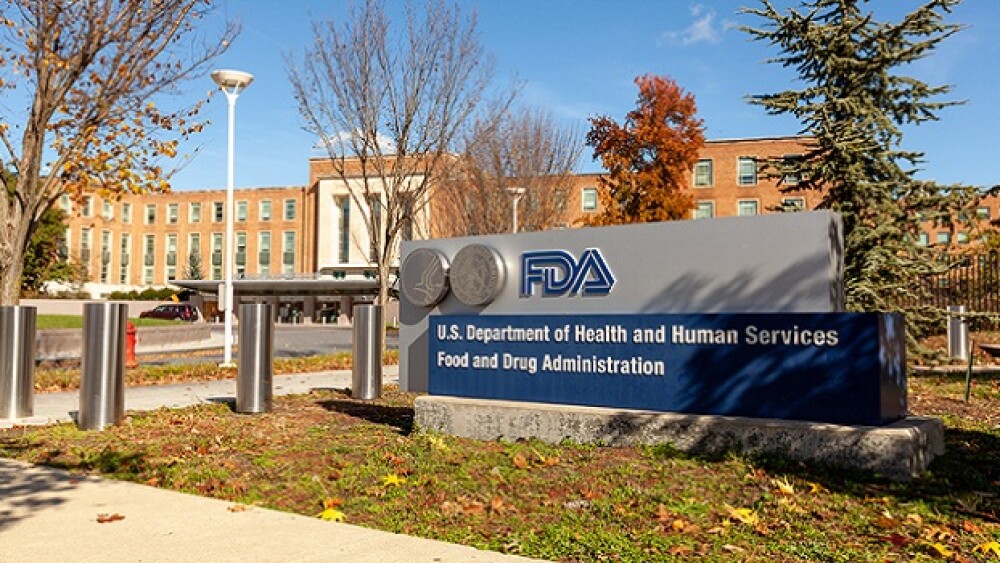Macrolide resistance shown to be significantly more common in outpatients vs. inpatients, with rates as high as 45.3 percent vs. 37.8 percent respectively
- Contemporary data demonstrate macrolide resistance in S. pneumoniae is 39.5 percent overall and greater than 25 percent in most regions of the country
- Macrolide resistance shown to be significantly more common in outpatients vs. inpatients, with rates as high as 45.3 percent vs. 37.8 percent respectively
- Findings underscore need for new monotherapy alternatives to macrolides in the management of CABP
DUBLIN, Ireland and KING OF PRUSSIA, Pa., Feb. 23, 2021 (GLOBE NEWSWIRE) -- Nabriva Therapeutics plc (NASDAQ: NBRV), a biopharmaceutical company engaged in the commercialization and development of innovative anti-infective agents to treat serious infections, announced the publication of a study documenting the high rates of macrolide-resistant Streptococcus pneumoniae throughout the United States. The study entitled, A Multicenter Evaluation of the Prevalence and Regional Variation in Macrolide Resistant S. pneumoniae in Ambulatory and Hospitalized Adult Patients in the U.S. was published this month in Open Forum Infectious Diseases (OFID), and demonstrated that macrolide resistance in S. pneumoniae is greater than 25 percent in most regions of the country and 39.5 percent overall. An accompanying editorial, authored by Daniel Musher, M.D., was also published in same issue of OFID.
The retrospective cohort study assessed 3,626 patients with a positive S. pneumoniae blood or respiratory culture evaluated between October 2018 and September 2019 at 329 hospitals in the BD Insights Research Database (Becton, Dickinson and Company, Franklin Lakes, NJ, US) across nine U.S. Census geographic regions. Macrolide resistance was observed in 47.3 percent of S. pneumoniae obtained from respiratory cultures, and 29.6 percent from blood cultures. While the overall rate of macrolide resistance was 39.5 percent, macrolide resistance in respiratory isolates was ≥25% in all regions of the U.S. In addition, higher rates of macrolide resistance were seen among ambulatory patients (45.3 percent) as compared with inpatients (37.8 percent).
Macrolide-resistant S. pneumoniae is designated as a serious public health threat according to the Centers for Disease Control and Prevention (CDC). S. pneumoniae is the leading cause of community-acquired bacterial pneumonia (CABP), a lung infection and the most common type of pneumonia that occurs outside of hospitals or other health care facilities. According to the CDC, S. pneumoniae causes 900,000 infections and 3,600 deaths annually. Joint guidance from the Infectious Diseases Society of America (IDSA)/American Thoracic Society (ATS) for the treatment of CABP recommend that macrolide antibiotics only be used if local pneumococcal resistance is less than 25 percent.
“The high rates of macrolide-resistant S. pneumoniae throughout the United States is the latest in mounting evidence for the need to combat the public health risks of antibiotic resistance,” said Kalvin C. Yu, MD, FIDSA and Medical Director at Becton Dickinson and Company. “Indiscriminate use of macrolides for viral conditions has been highlighted during COVID-19; the corollary here is clinicians now need to consider alternatives to macrolide monotherapy for suspected community-acquired pneumonia.”
“The findings from this study demonstrate the importance of contemporary, local epidemiology data to optimize the selection of empiric therapy for patients with CABP in accordance with 2019 guidelines issued by the IDSA/ATS,” said Jennifer Schranz, MD, Chief Medical Officer at Nabriva. “Based on current treatment guidelines, clinicians should consider alternatives to macrolide monotherapy for community-acquired pneumonia in the U.S. The study results also underscore the urgent need for innovative antibacterial agents with a novel mechanism of action against drug-resistant S. pneumoniae that offer a short-course, monotherapy treatment option.”
The full results of the study and related editorial commentary - Macrolides as empiric therapy for outpatients with pneumonia – are available online at OFID.
About XENLETA®
XENLETA is a first-in-class systemic pleuromutilin antibiotic for the intravenous (IV) and oral treatment of CABP in adults. XENLETA offers an effective and well tolerated empiric monotherapy for CABP with a treatment duration as short as five days and the potential to address the limitations of existing agents.
XENLETA has a novel mechanism of action that targets a binding site on bacteria that is different from existing antibiotics. It has been shown to result in no cross resistance to other antibiotic classes commonly prescribed for CABP and a low potential for the development of resistance. XENLETA is also convenient for patients being treated in the hospital, transitioning treatment out of the hospital or initiating treatment in the community.
About Nabriva Therapeutics plc
Nabriva Therapeutics is a biopharmaceutical company engaged in the commercialization and development of innovative anti-infective agents to treat serious infections. Nabriva Therapeutics received U.S. Food and Drug Administration approval for XENLETA® (lefamulin injection, lefamulin tablets), the first systemic pleuromutilin antibiotic for community-acquired bacterial pneumonia (CABP). Nabriva Therapeutics is also developing CONTEPO™ (fosfomycin) for injection, a potential first-in-class epoxide antibiotic for complicated urinary tract infections (cUTI), including acute pyelonephritis. Nabriva entered into an exclusive agreement with subsidiaries of Merck & Co. Inc., Kenilworth, N.J., USA to market, sell and distribute SIVEXTRO® (tedizolid phosphate) in the United States and certain of its territories.
INDICATION AND IMPORTANT SAFETY INFORMATION
INDICATION
XENLETA is a pleuromutilin antibacterial indicated for the treatment of adults with community-acquired bacterial pneumonia (CABP) caused by the following susceptible microorganisms: Streptococcus pneumoniae, Staphylococcus aureus (methicillin-susceptible isolates), Haemophilus influenzae, Legionella pneumophila, Mycoplasma pneumoniae, and Chlamydophila pneumoniae.
USAGE
To reduce the development of drug-resistant bacteria and maintain the effectiveness of XENLETA and other antibacterial drugs, XENLETA should be used only to treat or prevent infections that are proven or strongly suspected to be caused by susceptible bacteria.
IMPORTANT SAFETY INFORMATION
CONTRAINDICATIONS
XENLETA is contraindicated in patients with known hypersensitivity to XENLETA or pleuromutilins.
XENLETA tablets are contraindicated for use with CYP3A4 substrates that prolong the QT interval.
WARNINGS AND PRECAUTIONS
XENLETA has the potential to prolong the QT interval. Avoid XENLETA in patients with known QT prolongation, ventricular arrhythmias, and patients receiving drugs that may prolong the QT interval.
Based on animal studies, XENLETA may cause fetal harm. Advise females of reproductive potential of the potential risk to the fetus and to use effective contraception.
Clostridium difficile-associated diarrhea (CDAD) has been reported with nearly all systemic antibacterial agents, including XENLETA, with severity ranging from mild diarrhea to fatal colitis. Evaluate if diarrhea occurs.
ADVERSE REACTIONS
The most common adverse reactions (≥2%) for (a) XENLETA Injection are administration site reactions, hepatic enzyme elevation, nausea, hypokalemia, insomnia, and headache and (b) XENLETA Tablets are diarrhea, nausea, vomiting, and hepatic enzyme elevation.
USE IN SPECIFIC POPULATIONS
In patients with severe hepatic impairment, reduce the dosage of XENLETA Injection to 150 mg infused over 60 minutes every 24 hours. XENLETA Tablets are not recommended in patients with moderate or severe hepatic impairment due to insufficient information to provide dosing recommendations.
Avoid XENLETA Injection and Tablets with concomitant strong or moderate CYP3A or P-gp inducers. Monitor for reduced efficacy of XENLETA.
Avoid XENLETA Tablets with strong CYP3A or P-gp inhibitors.
Monitor for adverse reactions of sensitive CYP3A substrates administered with XENLETA Tablets.
XENLETA has not been studied in pregnant women. Verify pregnancy status in females prior to initiating XENLETA and advise females to use contraception during treatment and for 2 days after the final dose. Lactating women should pump and discard milk for the duration of treatment with XENLETA and for 2 days after the final dose.
To report SUSPECTED ADVERSE REACTIONS, or administration during pregnancy, contact Nabriva Therapeutics US, Inc. at 1-855-5NABRIVA or FDA at 1-800-FDA-1088 or https://www.fda.gov/safety/medwatch.
Please see Full Prescribing Information for XENLETA.
Forward-Looking Statements
Any statements in this press release about future expectations, plans and prospects for Nabriva Therapeutics and other statements containing the words “anticipate,” “believe,” “estimate,” “expect,” “intend,” “may,” “plan,” “predict,” “project,” “target,” “potential,” “likely,” “will,” “would,” “could,” “should,” “continue,” and similar expressions, constitute forward-looking statements within the meaning of The Private Securities Litigation Reform Act of 1995. Actual results may differ materially from those indicated by such forward-looking statements as a result of various important factors, including: Nabriva Therapeutics’ ability to successfully implement its commercialization plans for XENLETA and whether market demand for XENLETA is consistent with its expectations, Nabriva Therapeutics’ ability to build and maintain a sales force for XENLETA, the content and timing of decisions made by the U.S. Food and Drug Administration and other regulatory authorities, the uncertainties inherent in the initiation and conduct of clinical trials, availability and timing of data from clinical trials, whether results of early clinical trials or studies in different disease indications will be indicative of the results of ongoing or future trials, uncertainties associated with regulatory review of clinical trials and applications for marketing approvals, the availability or commercial potential of CONTEPO for the treatment of cUTI, the ability to retain and hire key personnel, the availability of adequate additional financing on acceptable terms or at all and such other important factors as are set forth in Nabriva Therapeutics’ annual and quarterly reports and other filings on file with the SEC. In addition, the forward-looking statements included in this press release represent Nabriva Therapeutics’ views as of the date of this press release. Nabriva Therapeutics anticipates that subsequent events and developments may cause its views to change. However, while Nabriva Therapeutics may elect to update these forward-looking statements at some point in the future, it specifically disclaims any obligation to do so. These forward-looking statements should not be relied upon as representing Nabriva Therapeutics’ views as of any date subsequent to the date of this press release.
CONTACTS:
For Investors
Kim Anderson
Nabriva Therapeutics plc
ir@nabriva.com
For Media
Mike Beyer
Sam Brown Inc.
mikebeyer@sambrown.com
312-961-2502





